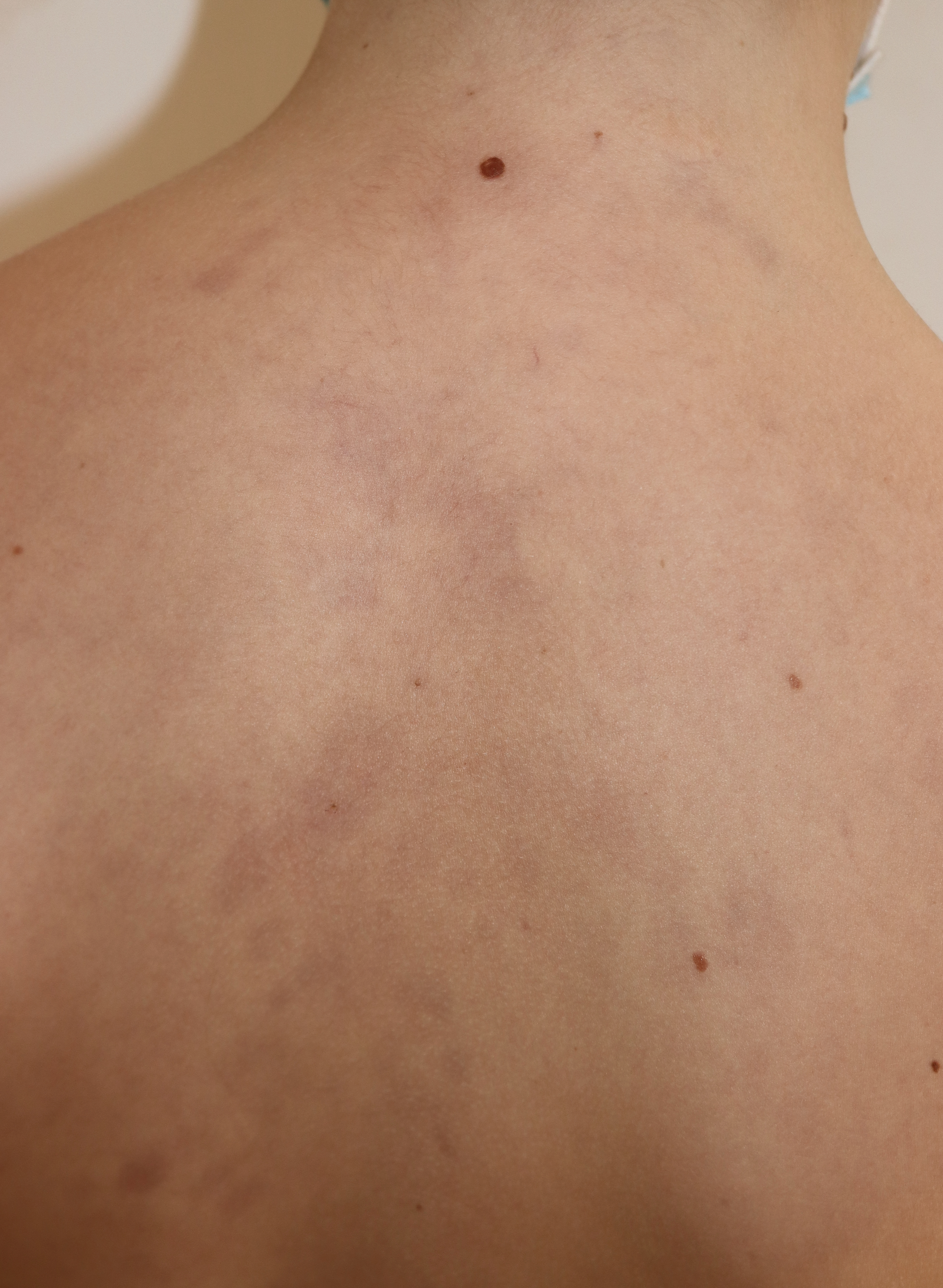Phthirus pubis on macula cerulea

Downloads
DOI:
https://doi.org/10.26326/2281-9649.31.2.2249How to Cite
Abstract
Phthiriasis pubis in children is due in most cases to an innocent family infestation. The absence of terminal hair in the perigenital and axillary areas in prepubertal children means that crab lice are never found in the pubic area, in underwear and in the axillary region in pediatric age. Most often in children, crab lice are found on the eyelashes and sometimes in the hair, especially at the hair-line. However, the sign that almost always brings the child to the doctor are the maculae caeruleae, whose pathogenesis is still uncertain (1, 2). These spots, which are frequent in children, are almost never found in adults (5), probably because in the adult the diagnosis is easier and more immediate, because the infestation is more frequent and clearly linked to sexual contagion, and because it is more known to the doctors and also to patients who often diagnose themselves with the disease and treat themselves with the help of the pharmacist. In children, on the other hand, this infestation is less frequent, it affects unusual sites because Phthirus pubis has to get by on hair with characteristics different from those of the adult it is used to, and is little known to pediatricians and dermatologists who, when faced with unusual spots resembling bruises, often make a hypothesis of abuse (7). For these reasons, crab lice are diagnosed late in children and therefore have more time to meet their dietary needs consisting of monotonous blood-based meals and cause the appearance of maculae caeruleae. Furthermore, unlike Pediculus capitis, Phthirus pubis moves less: this is the reason why the blue-grey spots are found almost exclusively on the upper trunk and scalp (4) in the child, while in the rare cases observed in adults they are found at the root of the lower (6) and upper (3) limbs. However, although moving less, it lingers longer in the site of its blood meal like the tick, and unlike Pediculus capitis, thus favoring the formation of bruises.
